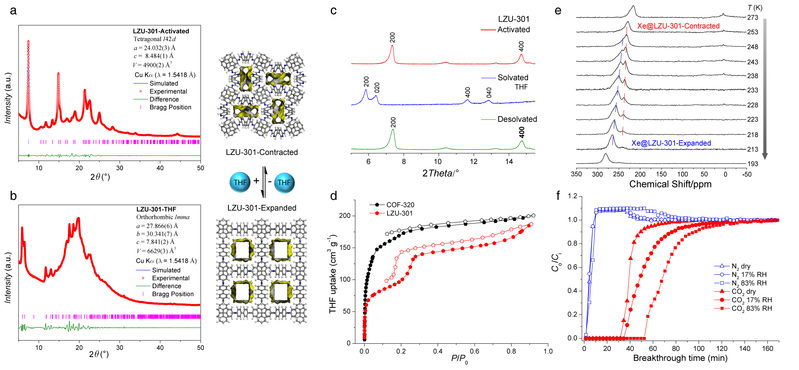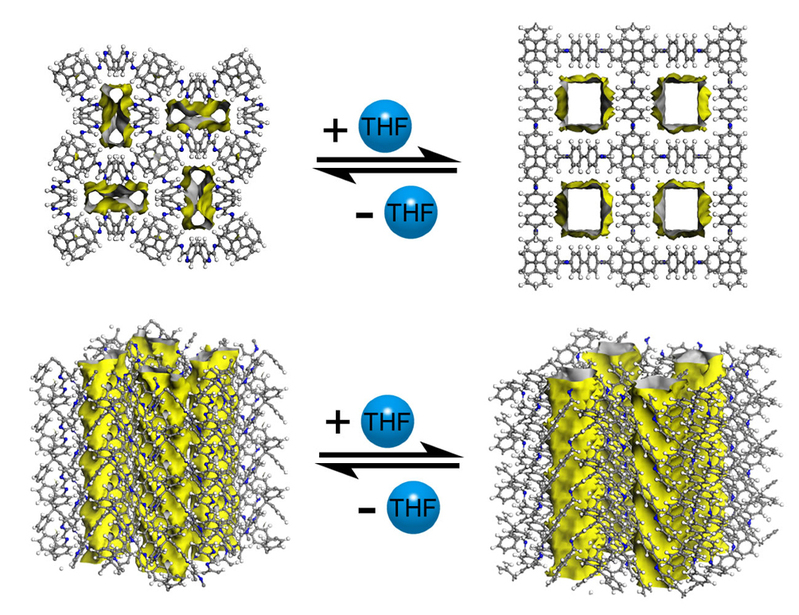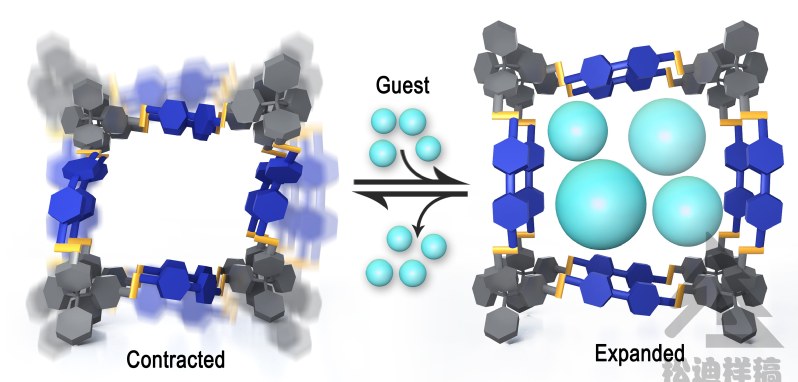Professor Zhang Yuebiao’s research group, in collaboration with researchers from Lanzhou University, recently published a paper titled “A Dynamic Covalent Organic Framework” in the Journal of American Chemical Society. SPST graduate student Wei Lei is the co-author, and Dr. Zhang Yuebiao and Professor Wang Wei are the corresponding authors. The ShanghaiTech University research was supported by the ShanghaiTech University Research Startup Fund, NSFC-Excellent Young Scientists Fund, and ShanghaiTech-SARI Joint Laboratory of Low-Carbon Energy Science.
Dynamic responses of crystalline porous materials are highly desired properties to achieve extraordinary performance in sensing, adsorption & separation, gas storage, and heterogeneous catalysis, a periodic symmetry change in responding to extend stimuli such as temperature, pressure and guest molecule, evident by so-called ‘crystal-crystal transformation.’ These unique phenomena have been well-studied in the realm of metal-organic frameworks (MOFs), while it remains largely untapped in the emerging area of covalent organic frameworks (COFs), due to difficulty in structural elucidation. Design principle and systematic synthesis are therefore sorely needed to propel COFs into dynamic materials for their practical applications. By linking the tetrahedral organic building block entirely with imine bonds, a new three-dimensional COF functionalized with pyridyl groups has been synthesized through imine condensation, whose structure transformation accompanying the guest inclusion/release has been comprehensively identified via PXRD analysis, organic vapor sorption, and 129Xe NMR spectroscopy. The dynamic behavior was further integrated in the CO2 separation application, where a water gating effect was observed for further enhancement of CO2 uptake. The inclusion of large molecules, access of interior functionalities, and potential applications of heterogeneous catalysis were tested via the Knoevenagel catalytic reactions. This work will inspire rational design of dynamic COF materials and utilization of such functions in practical applications.

The comprehensive characterization of the dynamic covalent organic framework: (a, b) Powder X-ray diffraction analyses; (c) reversible crystal structure transformation; (d) organic vapor adsorption isotherm at 283 K; (e)129Xe NMR spectroscopy; (f) breakthrough curves of sorption separation of CO2/N2.


- About
- News
- Faculty
- Research
-
Academics
- School of Physical Science and Technology (SPST)
- School of Life Science and Technology (SLST)
- School of Information Science and Technology (SIST)
- School of Entrepreneurship and Management (SEM)
- School of Creativity and Art (SCA)
- Institute of Humanities (IH)
- School of Biomedical Engineering (BME)
- Shanghai Institute for Advanced Immunochemical Studies (SIAIS)
- iHuman Institute
- Institute of Mathematical Sciences (IMS)
- Center for Transformative Science (CTS)
- Institute of Carbon Neutrality (ICN)
- Shanghai Clinical Research and Trial Center
- Tech Transfer
- Global
- Campus Life

